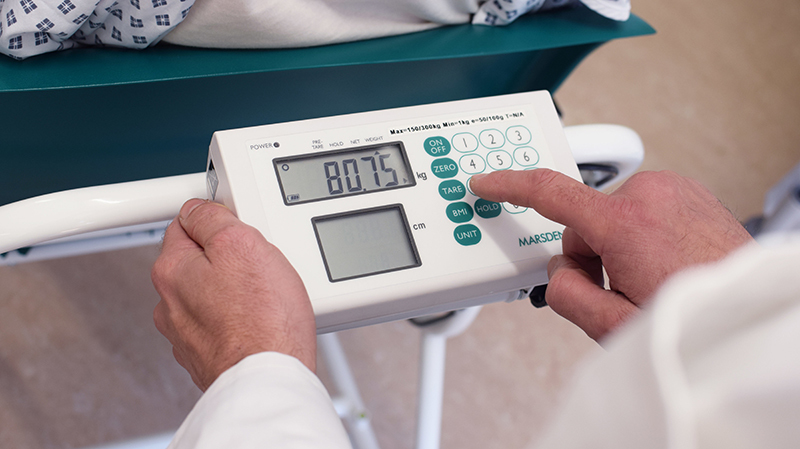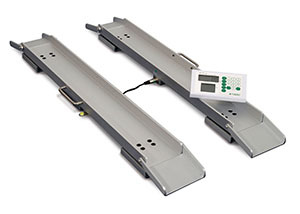How to Weigh a Child with Physical Disabilities

Childhood obesity has been called ‘one of the greatest health problems of the 21st century’ – with Marsden reporting earlier this year that 40% of children in Year 6 are overweight.
Children with disabilities are particularly vulnerable. Estimates suggest that a disabled child is two or three times more likely to be overweight or obese than their typically developing peers.
Childhood obesity can link to lower life expectancy, high blood pressure and type 2 diabetes. For a disabled child, they are at risk of secondary conditions and symptoms, such as extreme muscle loss, pain, mobility limitation and depression – so monitoring and managing weight is essential. In this blog post, we explain what we believe is best practice for getting an accurate weight for a disabled child.
Are disabled children being weighed?
Despite the need to weigh disabled patients, only 53% of children with disabilities have a weight recorded in their medical records. Only 37% have weight and height records which are essential to calculate BMI.
Further, only 23% classified as being overweight or obese are identified as having excess weight in their notes – which may hinder action being taken.
How do you weigh a disabled child?
How to weigh a disabled child depends on how the disability affects them, and where (and by who) the weighing will be taking place.
In a hospital, weighing disabled children may be done by using a chair scale, if the child is unable to stand or unsteady on their feet. The scale would need to be switched on before the child sits on it. Press the ON/OFF button on any Marsden wheelchair scale, and press Zero to reset the scale if a figure other than 0.0kg is displayed.
Next the child will need to get into the chair scale. If they are not strong enough to lift themselves onto the scale, position the chair scale close to where they are sitting. The hinged armrests can be placed in an upright position. If the child is laid down, one hand can be placed under their back and they can be slowly raised into a sitting position.
From a standing position, place your feet shoulder-width apart, and squat down, resist bending at the waist and keep your spine straight and head relaxed. Keep the child close to your body to reduce strain on your back. Keep your back straight and head faced forward, and straighten until you are in a standing position. Throughout the process, keep your body facing the child and do not twist your body to avoid strain. Slowly bend your needs and lower the child into the chair scale.
When the child’s feet are positioned on the footrest and arms are situated on the armrest, the weight reading will be displayed on the indicator at the back of the chair.
Alternatively, the child’s own wheelchair can be used as part of the weighing process by using a wheelchair scale. First, remove the weight of the empty wheelchair by pressing the Tare button when only the wheelchair is situated on the scale. A minus reading will be displayed on the indicator. When the wheelchair and the scale are rolled back onto the scale only the person’s weight will be displayed.
When weighing in a wheelchair at home, we recommend the Marsden M-610 as these portable beams are easy to set up and only take up limited space for storage purposes.

If the child is able to stand but needs support, several Marsden scales are fitted with handrail support, such as the M-652 and Marsden M-700.
Which scales do you need for weighing disabled children?
Marsden M-210: The choice for hospitals for weighing disabled children, the M-210 Chair Scale is portable, easy to use and weighs accurately to 50g. With a capacity to 250kg it is suitable for weighing almost every patient.
Marsden M-652: When weighing disabled patients in a wheelchair, Marsden has a range of wheelchair scales available. The M-652 benefits from handrails to support the child, and as the indicator is mounted to the handrail it is easy to read.
Marsden M-610: Ideal for wheelchair weighing at home, these portable beams can be positioned the desired distance apart for weighing any size of wheelchair.
Marsden M-700: This 3-in-1 scale benefits from handrails, a baby bowl and seat to assist with your child’s needs – and means medical professionals do not need to invest in three separate scales.
Marsden M-410: This scale has a 50kg capacity so is ideal for weighing toddlers. The hygienic baby bowl slides off revealing a floor scale beneath. This scale is also lightweight and portable for community use.
Marsden M-600: This hoist weighing attachment is perfect if you use hoists. The scale attaches between the spreader bar and the sling, meaning you can get a weight reading for a child whilst they are using a hoist. Hoist weighing attachments manufactured by Marsden are MDD Approved.
For more guidance on weighing someone who can’t stand, read this best practice guide. For more support when choosing the right weighing scale for your needs, call Marsden on 01709 364296 or contact us here.